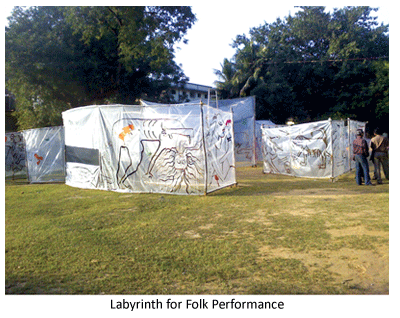- Prelude
- Editorial
- Manjit Bawa
- Husain's Calcutta
- Vivan's Visionary Reconstruction of History at Victoria Memorial, 1998
- The Remaking of Indian Painting
- Picasso Re-visited
- Benodebehari Mukherjee: A Recluse and the Centenary Show
- In Past and Present Continuum Speaking to Thota Vaikuntam
- The Importance of Being Husain
- Image-making to Image-circulation: Implicated Image(ry)
- 153 Years Old yet Young at Heart: Mumbai's Sir JJ School of Art
- Two Decades: A Critical Insight by an Art Critic and an Artist
- Biedermeier Style: Biedermeier Furniture
- Vacheron Constantin
- The Irony of Andy Warhol
- Then and Now: An Indian Perspective to the Art Market 1990-2010
- Pablo, Andy, Here I Come
- What Happened and What's Forthcoming
- Bid's Got Hammered?
- Anish Kapoor at National Gallery of Modern Art in Delhi and Mehboob Studio in Mumbai
- Tribute to Hemanta Misra: the “Calcutta Group” Painter
- Art Events Kolkata
- Mumbai Art Sighting
- Art Bengaluru
- Exploring the Riverine Culture of Bengal
- Alternative art practices define Bangalore
- India Art Summit Turns Three
- An Aesthetic Fair
- SSVAD: A New Arts Centre in Santineketan
- Visible Invisible by Siraj Saxena
- A Fleeting World : Paintings by Sunil De
- Previews
- In the News
ART news & views
An Aesthetic Fair
Volume: 3 Issue No: 12 Month: 1 Year: 2011
Reports
by Vishal Tondon
Kala Bhavana, Santiniketan threw its doors open for wider interaction with art lovers during the first two days of December. The event was the annual fair, Nandan Mela, which commemorates the memory and legacy of Nandalal Bose, the legendary artist and teacher of Kala Bhavana who was part of the Bengal School. Nandalal Bose took charge of Kala Bhavan in 1922 and is considered to be the man who shaped the institute. The master-artist believed that a holistic structure to the practice and teaching of art was necessary for a healthy society, and he endeavored to bridge the gap between the fine arts and the living traditions. He proposed a revival of indigenous art languages for a newly independent India, and for sharing our practices with the public. Thus he aimed at rescuing art from hermeticism, and making it socially relevant. In his book Vision and Creation he emphasized on the importance of having an annual art fair for the community people. Way back in 1973, Nandan Mela was first conceived as an occasion to raise funds for students welfare.  The entire proceedings from the mela (fair) go to the Kala Bhavan Students' Aid Fund. On this occasion the students learn things relating to art practice in addition to the prescribed curriculum.
The entire proceedings from the mela (fair) go to the Kala Bhavan Students' Aid Fund. On this occasion the students learn things relating to art practice in addition to the prescribed curriculum.
Nandalal Bose's birthday is celebrated on 3rd December (he passes away in 1966). In the morning, on 3rd December every year, a candle-light procession (Boitalik) proceeds from the Kala Bhavana to Nandalal Bose's house early morning, to pay homage to him. Later in the day, students and teachers go out on a picnic to mark the completetion of the celebration.
Like all the other years, the 37th Nandan Mela this year, too, had a host of activities including art stalls put up by the Painting, Sculpture, Ceramics, Graphics, Design and Art History Departments. These stalls had artworks made by the students and teachers ranging from calendars to craft items, diaries, stationery, fashion jewellery, paintings, prints, saras (clay plates), and ceramics, wood and metal sculptures for sale at affordable prices. In addition to these were the annual art magazines, Nandan and Searching Lines for the discerning readers, Department of Art History brings out every year. For the savories, there were stalls of Indian, Thai, Korean as well as Continental dishes, as well as a Japanese tea stall. It is interesting to note that with changing times and sensibilities students come up with newer suggestions for the stalls. This year there had even been a nail art and tattoo stall, which was quite busy throughout the two evenings.
An amazing dance performance a fusion of ballet and contemporary dance by Viviane Capt, held the audience awestruck. Viviane is pursuing her PhD on the influences of Indian dance on western choreography at the Sangit Bhavan at Santiniketan. She is especially interested in exploring the connection between dance and spirituality, and is an ardent follower of the choreographer Maurice Bejart. The puppets for the stagecraft her dance were created by Pratik Bhattacharya, a young student in the Department of Painting. She proposed peace and love in the times of strife through her eclectic style, and it ended with her handing out flowers to the audience. In another recital by her, a labyrinth was erected, inside which folk music was played.
Installation practices are a part and parcel of Nandan Mela, and visitors get a taste of the nature of art practice in the public places by the students during their two-day visit. This year we had some innovative installations, one of them being Sudipto Mondal's T For? An array of images hung on a tree as part of this installation, which suggested that the 'T' could possibly be for Tagore, tree, Twitter, or tumi (you). Under the placard for Tumi hung a mirror in which viewers gleefully watched themselves, and became a part of the installation themselves. No doubt, it is an innovative way of hinting at our place in the larger scheme of things. Hope the visitors enjoyed the efforts.